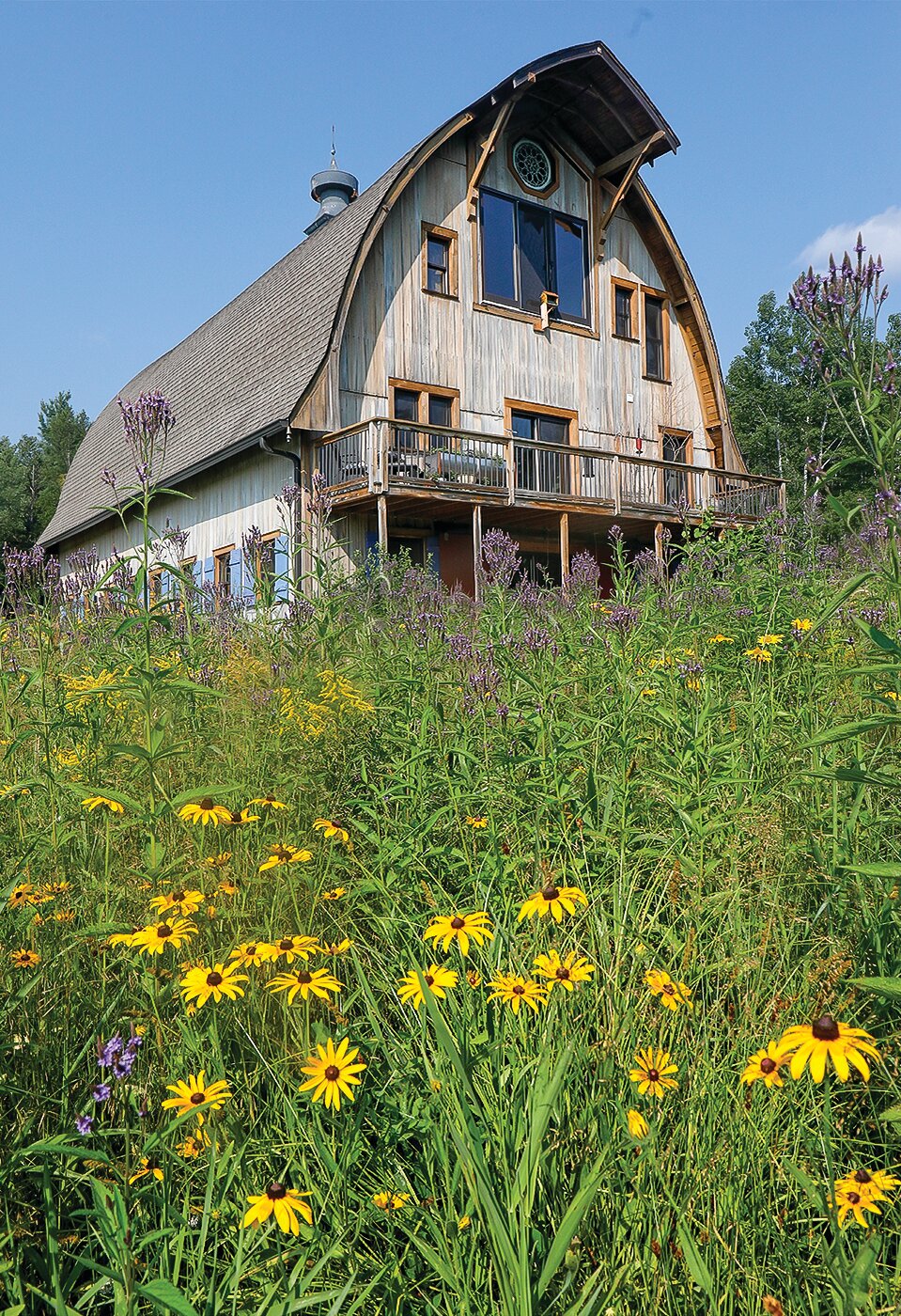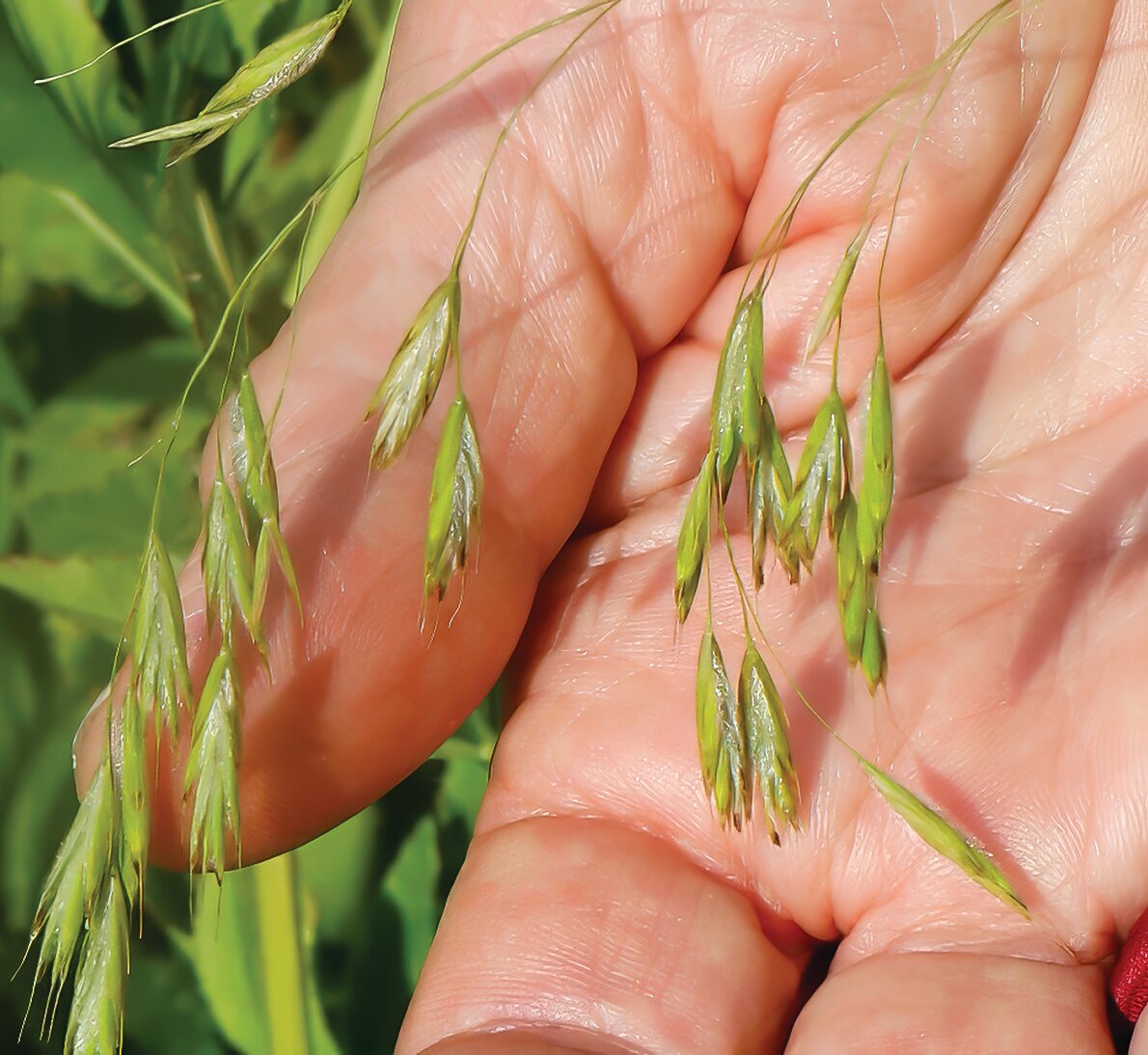Support the Timberjay by making a donation.
A field transformed
Converting an old field full of invasive grasses to native prairie plants
COOK- For Sharon Beatty and David Stanton, the concept of home is about more than a building. So, when the couple decided to restore a century-old barn in rural Cook as their new home, they needed a …
This item is available in full to subscribers.
Attention subscribers
To continue reading, you will need to either log in to your subscriber account, below, or purchase a new subscription.
Please log in to continue |
A field transformed
Converting an old field full of invasive grasses to native prairie plants
COOK- For Sharon Beatty and David Stanton, the concept of home is about more than a building. So, when the couple decided to restore a century-old barn in rural Cook as their new home, they needed a plan for the surrounding landscape as well.
“The idea was that we would plant it with wildflowers and plants that were native to Minnesota – some are native to northern Minnesota, others more middle Minnesota, to have a meadow and wildflowers and grasses which would encourage native birds and pollinators. Some of these species have populated the northern area for a long time.”
It was a vision designed to help the local wildlife, said Beatty. “We wanted this to be a wildlife haven,” Beatty said. “For both of us, conservation is important. I think the primary driver was how to have a beautiful space outside, something “conservationally” good, but also practical, and luckily those three things fit together.”
The reimagining of the landscape around the barn began four years ago when the couple first worked to address the invasive reed canary grass, which had overrun most of the old field around the old barn.
“It’s one of the worst grasses that you can have, highly invasive,” Beatty said. “There’s not much nutrition in it for most species, and the foliage is so dense that little animals cannot use that space to hide very well.”
The solution was to do a lot of rototilling to get rid of not only the foliage but the extensive root system of the plant. Beatty said that they rototilled the ground eight times across the course of that summer. “We had to do it, but I think it’s under control now,” she said. “I did a lot of work earlier this year pulling out invasives as I find them, maybe three hours a week. I just have to give the natives a little more support for another year, and then it should be simple.”
Another invasive species that Beatty keeps an eye out for is bird’s foot trefoil.
“It can grow in any space where there’s any kind of sun, especially on disturbed soil,” she said. “It seems to be good for some animals, but not for others. Most pollinators, except perhaps for the bees, they cannot access the nectar. You want variety, especially native varieties, that other pollinators can make use of.”
When it was time to begin establishing Minnesota native grasses, flowers, and plants, Beatty and Stanton turned to a nursery near Duluth specializing in native restorations.
Prairie Restorations was founded in 1977 as one of the first companies in the nation devoted exclusively to designing, restoring, and managing native prairie plant communities. Since then, the company has expanded to six locations throughout Minnesota, and broadened their operations to encompass wetland, woodland, and shoreline restorations as well.
The broad expertise came in handy when Beatty and Stanton realized that they weren’t dealing with just one environment but four on the one-acre plot.
“We only discovered it once we started planting,” Beatty said. “We have a small pond in there, and because of the pond, we had this extra soil which has created a berm. That berm is very, very poor soil, it’s mostly clay from underneath the ground. Things that will grow there are like poverty oak grass and fox tail barley, which is native but didn’t come with the seed mix, it just grew by itself.”
“The yarrow and black-eyed Susans are happy there near those trees, an area that gets more shade, and because the tree roots dry out the soil so much, that’s a special environment, and very little grew there,” Beatty continued.
The pond has also created another different area because, Beatty said, it leaks.
“This area here where you see so much more of the purple, you’ve got this leakage and it’s very wet, so some things won’t grow, others grow very well. That blue vervain is a gorgeous plant that is also really good for the butterflies and bees and pollinators of all sorts.”
Another area was more sandy due to road and sewage system construction, Beatty said, and that, too, required a different mix of native seed.
“So I’ve got maybe three or four different mixes now in different parts of the meadow, and that took some experimentation,” she said. “After that first rototilling we scattered the seeds, and the first year you just get these tiny green shoots.”
New growth created a guessing game, as Beatty had to learn what to leave and what to pull out.
“It’s hard to distinguish sometimes what are the natives and what are the invasives,” she said. “It can be really hard. I still have trouble with some grasses until they head out.”
It’s a task far more challenging than a typical home lawn because the meadow has 19 species of grass to contend with, 13 of which are the desired natives and six that are invasive species to be weeded out.
“You have to educate yourself about a lot of this, and it’s very interesting. I’ve learned a lot. I started out knowing almost nothing,” Beatty said. “In fact, things I thought were native because I see them everywhere are not, like daisies. There is a native daisy-like flower call an ox eye that is much smaller. So, I treat daisies as invasives and pull them all out.”
When the flowers are in bloom, the meadow is a colorful wonderland, with 26 varieties of native flowers that Beatty has either planted or have come back on their own.
“Now we have things like wild roses, wild strawberries, wild raspberries, blue violets, white violets, and even the columbines have come back,” Beatty said.
But again, she has to keep on the lookout for the invasive floral species, too, as she’s identified 14 of those in the meadow.
“Probably all of these you recognize, but they’re actually invasive,” she said. “They’re wild from somewhere else like Asia or Europe.”
And while keeping the invasives at bay sounds like a lot of hard work, as the native species get fully established they don’t require much care at all, because they’re adapted to thrive in the native environment.
“(Weeding invasives) is all I have to do,” Beatty said. “I don’t have to add fertilizer, in fact it’s not good to add fertilizer. I don’t have to put in chemicals, I don’t have to re-seed, I don’t have to mow. It’s quite practical in that regard.”
Beatty is interested in encouraging others to try their hand at converting landscape back to native plants and offered some tips.
“It’s best to prepare the ground really well, and in the first two or three years just be really vigilant,” she said. “Then you just have minor problems to deal with as it grows. You really have to know that the first three years you will have extra work, but then after that it should mostly take care of itself.”
Beatty noted that a native restoration would be easier to do in town with smaller lots than the one-acre plot she has been working with.
“If you have a small space like a yard it’s much easier,” she said.









